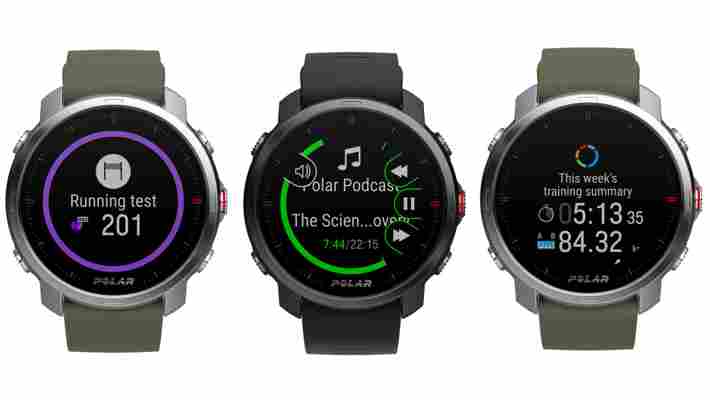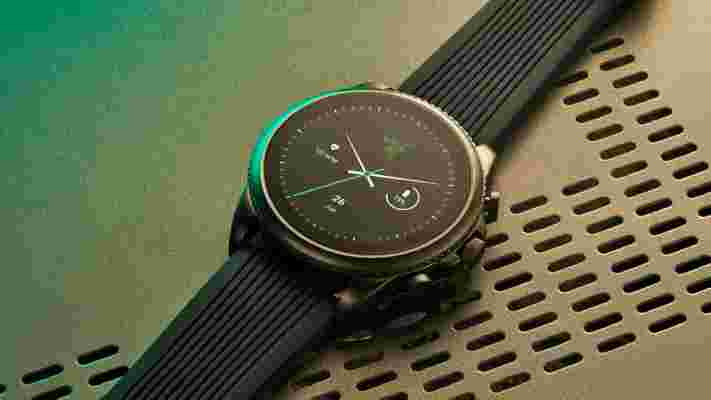Personal trainers – or PTs for short – have a mixed reputation. For every highly regarded, successful trainer, there’s another one with little to no experience and a huge ego. Listening to the advice of the former can help you get fit sooner, while the latter’s one-size-fits-all bro-science wisdom will stall your progress, or worse, get you injured.
Knowing all this, is it a good idea to get a PT, and how can they help you reach your fitness goals? Does it have to be expensive to hire a personal trainer? Where can you find good PTs? We’ll try to answer all your personal trainer questions in this article.
How to find the right PT, and what to look out for
"A great personal trainer will give you the tools you need to achieve your fitness goals, whether that's shaving seconds off your best sprint time, or learning how to deadlift”, says Charlotte Williams, personal trainer at Fit Kit , “The benefits of having a personal trainer aren't just limited to physical changes either; PTs can work wonders on your confidence inside and outside the gym, too. If you want to feel like the best version of yourself, then investing in a PT is definitely something you should consider.”
Personal trainers come in many shapes and sizes, and it’s important to think through what you need them for. Most people will hire a PT to help them either build muscle or lose weight, but good trainers will be able to help you with more specific goals. Before you hire the first well-rated PT that comes your way, do a bit of research.
“It sounds silly, but make sure your PT is qualified”, suggests Keith Shaw , head of personal training at Fitness First . “Read through a PT’s bio and make sure their expertise and experience match your goals.”
It’s unlikely you will need a personal trainer on the spot so there is no reason why you shouldn’t be doing a little more reading before you hire a trainer. The extra effort at the beginning can pay off later when you achieve your goals using a PT you trust and coaches you well.
“There are many ways to find the right PT, whether that’s a selection of PTs at your gym, a PT that’s recommended to you by someone you know, or an online trainer that inspires and impresses you”, adds Alex Crockford , fitness model, trainer and Bulk ambassador, “Either way, it’s essential to contact and ideally meet them to make sure you have a good rapport since you’ll be spending lots of time together.”
And indeed, having a good relationship with your PT is almost – if not more – as crucial as their excellent reputation. You’ll be spending hours with your trainer and if their mannerisms or tone of voice doesn’t sit well with you, it can have an effect on your performance. It doesn’t matter how well they train others, if you can’t vibe with them, they won’t be able to knock you into better shape.

How to make the most of your PT sessions
“It’s important to ask a lot of questions, absorb the information and then trust and listen to your PT”, Shaw recommends, “They are the experts, after all.” The old adage rings true: the only stupid question is the one not asked. Effective cooperation with a PT requires two-way communication: you tell the PT what you want to do and how you find the process while the PT adjusts the program to accommodate this feedback.
Timeliness is also crucial: “PTs often can't run over your time slot as they have other classes to teach and clients to train”, says Charlotte. To see results quickly, you should follow the advice of your personal trainer in-between sessions, too. “I used to remind all of my clients that the hour with me was critical, but the other 23 hours of the day they aren’t spending with me is even more important”, Alex chimes in, “This means taking on the PT’s advice about nutrition and lifestyle to make the most out of the training.”
How long do you need a PT for, and how much should you pay?
How long you use a personal trainer depends on your fitness goals. After the first meeting, a good PT should be able to tell you how long it will take them to help you achieve your goals, whether it’s losing 10 pounds of fat or gaining 10 pounds of lean muscle. An experienced PT should have a good idea about what work needs to be done and how many sessions this translates to.
“[PT sessions] could be an intensely short period to help people get back on track, or it could be a more long term commitment to help build and maintain a healthy and fit lifestyle”, Crockford suggests. Shaw agrees: “Losing a few pounds won’t take long, but any sort of rehabilitation work can take a very long time.”
As for the price, hiring a PT doesn’t have to cost the earth. The actual amount of money you pay for a PT varies from person to person, and it very much depends on the service you receive and the geographical location you’re in. A boutique studio will charge you more for a PT session than a trainer lingering around in a commercial gym. You can even find PTs online who aren’t affiliated with gyms and train people outdoors in parks and other public spaces.
“Most PTs sell their sessions in blocks, so start with that and see what progress you've made at the end of your block”, Williams explains, “Some people will feel this has given them enough knowledge to carry on without the help from their PT, other people will stick with their PT for years and years because they have a bond and work well together.”
Look at it this way: for the price of the two large pizzas you order every week, you can have weekly training sessions with a person who’s interested in getting you healthy as a successful client benefits PTs, too. Once you’re comfortable with your training, you might reduce the sessions to once every other week or even a month. But who knows, by then, you might look forward to your session with your personal trainer and wouldn’t change it, even if you could.
This article is part of TechRadar's Get Fit in 2022 series – a collection of ideas and guides to help get your new year's health goals off to the right start, whatever your current level of fitness.
Polar Grit X gets an update that will literally transform your runs
One of the world's toughest running watches, the Polar Grit X , has received a major firmware update for 2022 that will let you change your route on the fly during a run, link it to gym equipment for accurate heart rate monitoring during indoor workouts, and more.
The Polar Grit X arrived in September 2020. It was followed by the more rugged and outdoorsy Polar Grit X Pro in October 2021, but this latest software update gives owners of the original watch a hefty set of new features.
Most new running watches allow you to control your phone's music player from your wrist, avoiding the need to stop and dig out your handset when you want to skip a track. It's a useful feature, but one that was missing from the Grit X until now. Once you've downloaded the update, you'll find that you can navigate your playlist and adjust volume during training sessions, or from the watch's time view when you're not tracking an activity.
New training tools
As mentioned, you can now tweak your running route mid-workout, which allows you to change your course if you're starting to feel fatigued and want to cut your run short. Provided you've set up more than one route before heading out, you can switch between them by selecting 'Routes' from your watch's Quick Menu.
The January Polar Grit update adds a new running performance test, which lets you check your current fitness level, and set personal heart rate, speed, and power zones that you can use in future training sessions.

You'll be able to see a weekly summary of your week's training on the watch face, and you can use the Polar Flow smartphone app to create training targets based on power, add a ZonePointer so you can see at a glance which power and speed zone you're currently working in, and add last lap training views.
Finally, you can now turn the watch off, perform a factory reset directly from your wrist, or create a custom watch face featuring your name.
You can download the update now via either Polar FlowSync on your computer, or the Polar Flow app.
Opinion: do you really need a new watch?
It's refreshing to see watchmakers maintaining their existing products rather than pushing owners to invest in new hardware – particularly when it comes to rugged devices like the Polar Grit X that are built to survive many years of mud and sweat.
Yesterday (January 18) Garmin launched its new flagship running watch , the Garmin Fenix 7 . It's an impressive device (we were particularly impressed by its ability to track changes in stamina during a run), but the company isn't pushing its existing customers to upgrade.
Just the day before, the company released a huge firmware update for the three-year-old Fenix 6, which may well have tempted some owners to stick with the older device. Like the Grit X, the Fenix 6 is very solidly built, and it's unlikely that the hardware will have failed in the three years since its release.
That's not just good news for runners, but for the environment too, reducing electrical waste, and limiting demand for materials like lithium and cobalt, which are used in smartwatch batteries. Hopefully both Polar and Garmin will continue to keep their existing devices up to date with new fixes and features for many years to come.
These new Razer x Fossil and Skagen Falster smartwatches will get the Wear OS 3 upgrade
While Wear OS 3 was launched in mid-2021, only a few smartwatches yet run it, with the Samsung Galaxy Watch 4 family being the main devices to tout it. Two more smartwatches are coming soon though, and they'll be able to upgrade to Wear OS 3 later in the year.
Unveiled at annual tech event CES 2022 , these new watches are the Skagen Falster Gen 6, and the Razer x Fossil Gen 6. That's right, watchmaker Fossil has teamed up with gaming brand Razer for that latter watch - it's actually the first-gen device made between the brands, despite the name (it's the sixth-gen Fossil watch), but it sounds like future devices could come from the collaboration.
We'll run you through the watches below, but the main selling point could be the access to the newest version of Wear OS, something few smartwatches offer. While both devices run with Wear OS 2, they will both be eligible for the third-gen software update in mid to late 2022.
Now let's look at the watches.
New Fossil and Skagen smartwatches

Let's start with the Skagen Falster Gen 6, which is a follow-up to the Skagen Falster 3 launched at CES 2022 (it seems its name has been changed to bring it closer to the Fossil watches).
This watch uses the Snapdragon Wear 4100 Plus chipset, which promises to make the watch faster, but more importantly more power-efficient, than its predecessor. The body is stainless steel, with a 1.28-inch display, and there are six color combinations to choose from.
In our briefing, battery life was emphasized as a major selling point of the Gen 6 - apparently, it'll easily last a day, and charges very quickly too. We've had issues with the battery lives of Wear OS watches in the past, so that's a welcome thing to hear.
The Skagen Falster Gen 6 is on sale now, and costs $295 / £279 - that converts to around AU$410.
Next up is the Razer x Fossil Gen 6, a collaboration between gaming brand Razer and watch company Fossil. It's actually a limited-run device, with only 1,337 going on sale, and it'll cost $329 / £329. The cost converts to AU$450.
Design-wise, this isn't a million miles from the Fossil Gen 5 , but with some changes. The bands will come in Razer's distinctive lime-green hue (though there's a black option too), and there are some exclusive watch faces including one that emulates RGB gaming gear (gamers need their RGB, after all).
It also has a 1.28-inch screen, and comes in two options, depending on strap color.
Internally, this watch is similar to the Skagen one with Snapdragon Wear 4100 Plus, 1GB of RAM and 8GB of storage, and the battery life and charging speed should be identical.
Performance and software-wise, the two watches sound pretty similar - apparently, the Razer watch will have "elements of a Razer user interface", according to the company, but we don't really know what that means.
The main difference sounds to be in the appearance, with the Fossil and Razer collab resulting in a gamer-aesthetic watch, while the Skagen one looks like a more traditional wristwatch. We'll test these both out to see if they're worth your money when they release.